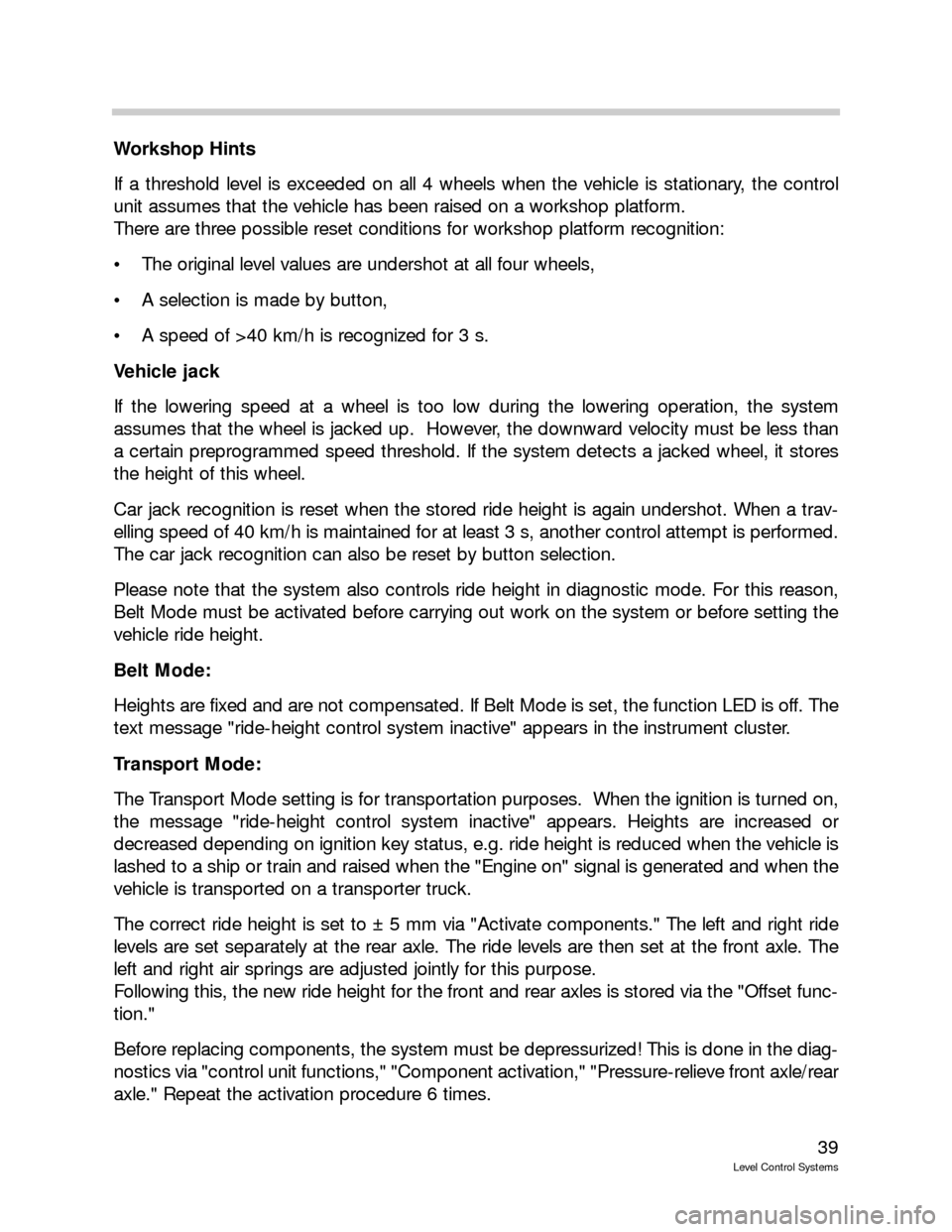key BMW X5 2002 E53 Level Control System Manual
[x] Cancel search | Manufacturer: BMW, Model Year: 2002, Model line: X5, Model: BMW X5 2002 E53Pages: 57, PDF Size: 1.89 MB
Page 39 of 57

39
Level Control Systems
Workshop Hints
If a threshold level is exceeded on all 4 wheels when the vehicle is stationary, the control
unit assumes that the vehicle has been raised on a workshop platform.
There are three possible reset conditions for workshop platform recognition:
The original level values are undershot at all four wheels,
A selection is made by button,
A speed of >40 km/h is recognized for 3 s.
Vehicle jack
If the lowering speed at a wheel is too low during the lowering operation, the system
assumes that the wheel is jacked up. However, the downward velocity must be less than
a certain preprogrammed speed threshold. If the system detects a jacked wheel, it stores
the height of this wheel.
Car jack recognition is reset when the stored ride height is again undershot. When a trav-
elling speed of 40 km/h is maintained for at least 3 s, another control attempt is performed.
The car jack recognition can also be reset by button selection.
Please note that the system also controls ride height in diagnostic mode. For this reason,
Belt Mode must be activated before carrying out work on the system or before setting the
vehicle ride height.
Belt Mode:
Heights are fixed and are not compensated. If Belt Mode is set, the function LED is off. The
text message "ride-height control system inactive" appears in the instrument cluster.
Transport Mode:
The Transport Mode setting is for transportation purposes. When the ignition is turned on,
the message "ride-height control system inactive" appears. Heights are increased or
decreased depending on ignition key status, e.g. ride height is reduced when the vehicle is
lashed to a ship or train and raised when the "Engine on" signal is generated and when the
vehicle is transported on a transporter truck.
The correct ride height is set to ± 5 mm via "Activate components." The left and right ride
levels are set separately at the rear axle. The ride levels are then set at the front axle. The
left and right air springs are adjusted jointly for this purpose.
Following this, the new ride height for the front and rear axles is stored via the "Offset func-
tion."
Before replacing components, the system must be depressurized! This is done in the diag-
nostics via "control unit functions," "Component activation," "Pressure-relieve front axle/rear
axle." Repeat the activation procedure 6 times.